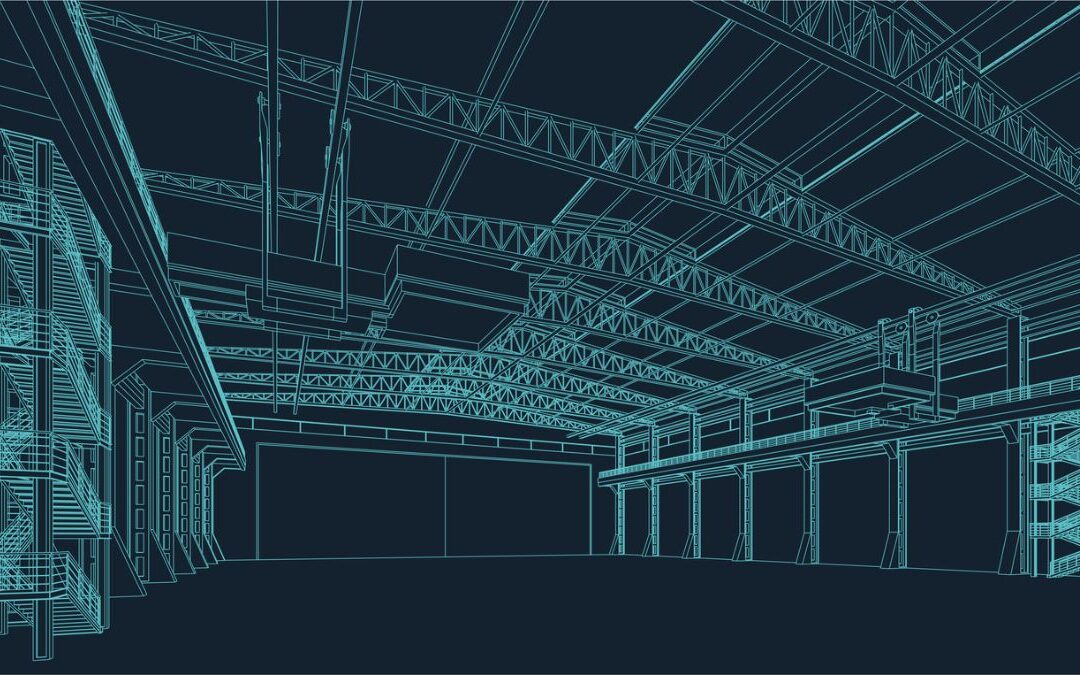Whether you are setting up a warehouse distribution centre from scratch or optimising an existing one, getting your distribution warehouse design right can lead to significant cost savings and smoother processes.
A well-executed warehouse design not only improves the flow of goods but also maximises space and reduces lead times.
Today we’ll explore the essential elements of designing a warehouse distribution centre, integrating logistics systems, and leveraging outsourced warehousing and distribution services to meet your business needs.
Key factors to consider in distribution warehouse design
When it comes to designing a distribution warehouse, a variety of factors must be considered to create an efficient and scalable operation.
Location and size considerations
The first step in warehouse and distribution centre design is choosing the right location. Proximity to key transport routes and customers can significantly impact delivery times and costs. Additionally, determining the optimal size of your facility based on current and projected inventory volumes is crucial for long-term success.
Layout design and flow optimisation
An effective logistics warehouse design focuses on optimising the flow of goods from receiving to dispatch. By mapping out a clear path for products to travel through the warehouse, you can minimise bottlenecks and improve throughput. Techniques like zone picking, cross-docking and conveyor systems are often integrated into the layout to streamline operations.
Logistical requirements
The logistics requirements of your business will heavily influence the design of your distribution warehouse. Factors such as product type, order volume and transportation methods need to be considered early in the planning process. For instance, a warehouse handling perishable goods will require specialised refrigeration zones, while a facility focused on e-commerce may need rapid order fulfilment capabilities.
Safety and compliance
Safety is a paramount concern in warehouse design strategy. Adhering to health and safety regulations ensures a safer working environment and reduces the risk of costly accidents. Key elements include proper lighting, clear walkways, fire suppression systems and regular training for employees on safe equipment usage.
Sustainable warehouse design
Incorporating sustainable practices into your distribution warehousing design not only reduces environmental impact but can also lead to cost savings. Energy-efficient lighting, solar panels and smart HVAC systems are some of the ways warehouses can become more eco-friendly. Additionally, recycling programmes and sustainable packaging can further align your facility with green initiatives.
Best practices for how to set up a warehouse distribution centre
Setting up a successful warehouse and distribution centre requires meticulous planning. Here are some best practices to consider:
Space utilisation and layout planning
Utilise vertical storage solutions and dynamic shelving systems to make the most of available space. Proper aisle width, strategic placement of workstations and clear signage all contribute to a safer and more productive environment.
Equipment selection and technology integration
Investing in the right machinery and equipment is key. This includes pallet racks, forklifts, conveyor belts and automated guided vehicles (AGVs).
Implementing warehouse and distribution systems
Effective warehouse and distribution systems involve a combination of warehouse management software (WMS), enterprise resource planning (ERP) systems, and automated data capture tools. These technologies help streamline inventory management, reduce errors and enhance visibility across the supply chain.
Outsourced warehousing and distribution: Is it right for you?
Outsourcing your warehousing and distribution operations to a third-party logistics provider (3PL) can be a strategic move for many businesses, particularly those looking to optimise costs and improve supply chain efficiency. However, it’s important to weigh the benefits and challenges of this approach before making a decision. Here’s a closer look at what you need to consider:
Benefits
- Cost savings: Reducing the need for capital investment in facilities and equipment.
- Flexibility: Scaling up or down based on seasonal demand.
- Expertise: Leveraging the knowledge and resources of experienced logistics professionals.
Challenges
- Loss of control: Relying on an external provider to meet your standards.
- Integration complexities: Requires seamless coordination between your ERP system, WMS, and the 3PL’s technology platform.
If you have the resources to manage a warehouse in-house and want complete control over your logistics, outsourcing may not be necessary.
However, if you are looking to reduce costs, increase flexibility, and leverage the expertise of experienced logistics professionals, partnering with a 3PL can offer a strategic advantage.
Conclusion
Effective distribution warehouse design is about more than just creating a storage space; it’s about optimising every aspect of the facility to ensure seamless operations, reduce costs and meet customer expectations. By carefully considering layout, technology, and logistics requirements, and potentially leveraging the benefits of outsourcing, you can build a warehouse that supports your business goals today and into the future.
Ready to optimise your warehouse? See our warehousing & distribution solutions here.

